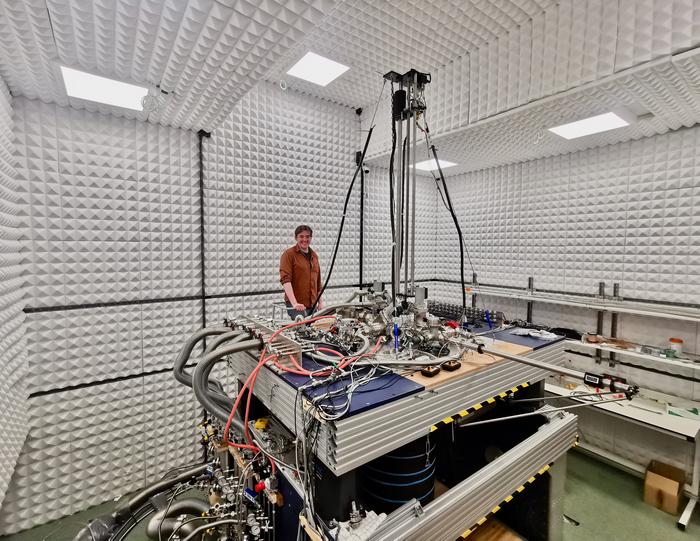A groundbreaking discovery spearheaded by researchers at Oxford University has unveiled a novel technique poised to revolutionize the quest for materials essential to the next generation of quantum computing. This pioneering method offers an unprecedented pathway to identify intrinsic topological superconductors, materials critical for developing large-scale, fault-tolerant quantum computers. The study, published in the distinguished journal Science, marks a significant leap toward overcoming the longstanding challenges associated with stabilizing quantum bits, or qubits, by mitigating quantum decoherence.
Quantum computers promise computational capacities exponentially surpassing those of classical supercomputers, leveraging quantum phenomena to tackle problems previously deemed intractable. However, their advancement is hampered by the fragility of quantum states, which are notoriously susceptible to environmental interference—a phenomenon known as quantum decoherence. For decades, physicists have hunted for materials resistant to this decoherence, capable of sustaining quantum information stably, yet definitive experimental validation has remained elusive.
The Oxford team, led by the Davis Group, introduced a sophisticated scanning tunneling microscope (STM) technique, innovatively adapted to capture minute quantum signatures at the atomic scale without perturbing the sample with external disturbances. This Andreev STM mode, conceptualized by Professor Séamus Davis, allows the detection of electrons confined within unique quantum states localized on the surface of topological superconductors—materials theorized to support exotic quasiparticles called Majorana fermions.
Topological superconductors represent an extraordinary quantum phase of matter whose surface states are “topologically protected,” meaning the stored quantum information is encoded in the system’s global geometric features rather than in fragile local states. Majorana fermions, in this context, emerge as quasiparticles capable of encoding quantum information non-locally. This non-local encoding inherently shields the quantum information from local noise or disturbances, dramatically enhancing qubit stability and paving the way for fault-tolerant quantum computing.
Despite theoretical predictions, the direct experimental identification of intrinsic topological superconductors has been a formidable challenge. Uranium ditelluride (UTe₂), discovered in 2019, has long tantalized physicists as a promising candidate exhibiting spin-aligned electron pairs—a crucial indicator of intrinsic topological superconductivity. Yet, concrete experimental confirmation had remained out of reach until now.
Utilizing the Andreev STM, the research team obtained ultra-high-resolution spectroscopic data revealing zero-energy surface states on UTe₂ that are consistent with theoretical predictions for intrinsic topological superconductivity. These findings confirm that UTe₂ naturally hosts such exotic quantum states, substantiating its status as an intrinsic topological superconductor. However, intriguingly, the Majorana fermions detected in UTe₂ appear in inseparable pairs, contrary to earlier expectations that envisaged isolated Majorana modes crucial for topological quantum computing.
This limitation notwithstanding, the employed Andreev STM technique stands as a landmark advance, offering a direct and reliable experimental methodology for probing topological superconductivity in a broad array of materials. By enabling the precise discrimination of intrinsic properties from extrinsic artefacts, this approach equips physicists with the tools needed to methodically explore and identify new superconducting materials that may harbor unpaired Majorana modes essential for quantum devices.
The implications of this work extend far beyond fundamental physics. Previous attempts to harness topological qubits—such as Microsoft’s Majorana 1 Quantum Processing Unit, which relies on synthetically engineered superconducting heterostructures—underscore the complexity and expense inherent in current quantum computer hardware development. The capacity to discover simple, naturally occurring crystalline materials that intrinsically exhibit topological superconductivity could greatly streamline and economize the fabrication of robust quantum devices.
Professor Séamus Davis highlighted the transformative potential of the discovery: the confluence of developing a new measurement technique, direct observation of topological surface states, and unambiguous identification of intrinsic topological superconductivity collectively heralds a new era in quantum materials science. This foundation promises to accelerate the identification of suitable materials to realize the anticipated quantum computing revolution.
Lead author Dr. Shuqiu Wang expressed enthusiasm regarding the breakthrough, emphasizing the excitement of witnessing the first spectroscopic signature of intrinsic topological superconductivity. Dr. Wang anticipates that the Andreev STM technique will unlock further discoveries in this vibrant research frontier, revealing previously inaccessible and exotic quantum phenomena.
This collaborative study also involved notable contributions from leading institutions such as the University of California – Berkeley, Lawrence Berkeley National Laboratory, Cornell University, University of Bristol, University of Maryland, Washington University, University College Cork, and University of Notre Dame, reflecting a worldwide commitment to solving the quantum materials puzzle.
Intrinsic topological superconductors, while still largely theoretical, are rapidly gaining experimental traction thanks to advances such as the Andreev STM. These efforts collectively signify a paradigm shift towards practical quantum technologies capable of harnessing exotic quantum matter in scalable, cost-effective platforms.
As quantum computing edges closer to practical realization, the innovations emerging from Oxford’s Davis Group have illuminated a promising corridor through the intricate landscape of quantum materials. The identification and characterization of intrinsic topological superconductors like UTe₂ enhance the roadmap toward fault-tolerant quantum machines, potentially ushering in an era where the full power of quantum mechanics can be harnessed to revolutionize computation, cryptography, and materials science across the globe.
Subject of Research: Identification and characterization of intrinsic topological superconductivity in uranium ditelluride (UTe₂) using the novel Andreev scanning tunneling microscope technique.
Article Title: Pair wave function symmetry in UTe2 from zero-energy surface-state visualization
News Publication Date: 29-May-2025
Web References:
- Davis Group, Oxford University – http://davis-group-quantum-matter-research.ie/
- DOI link to article – http://dx.doi.org/10.1126/science.adk7219
Image Credits: Catherine Dawson, Davis Group
Keywords: Quantum Computing, Topological Superconductors, Majorana Fermions, Andreev STM, Quantum Decoherence, UTe₂, Scanning Tunneling Microscope, Topological Quantum Computing, Quantum Materials, Intrinsic Topological Superconductivity




